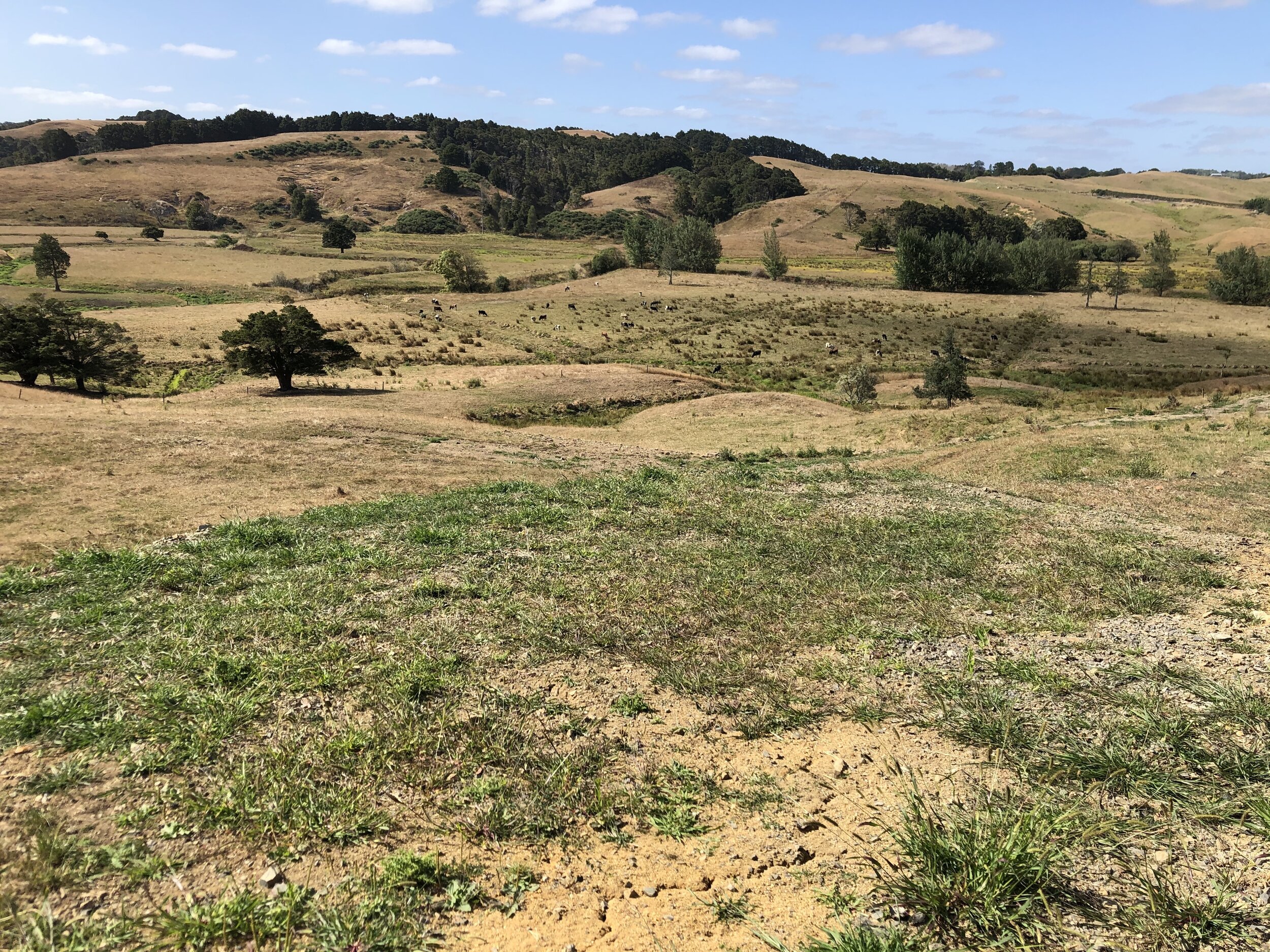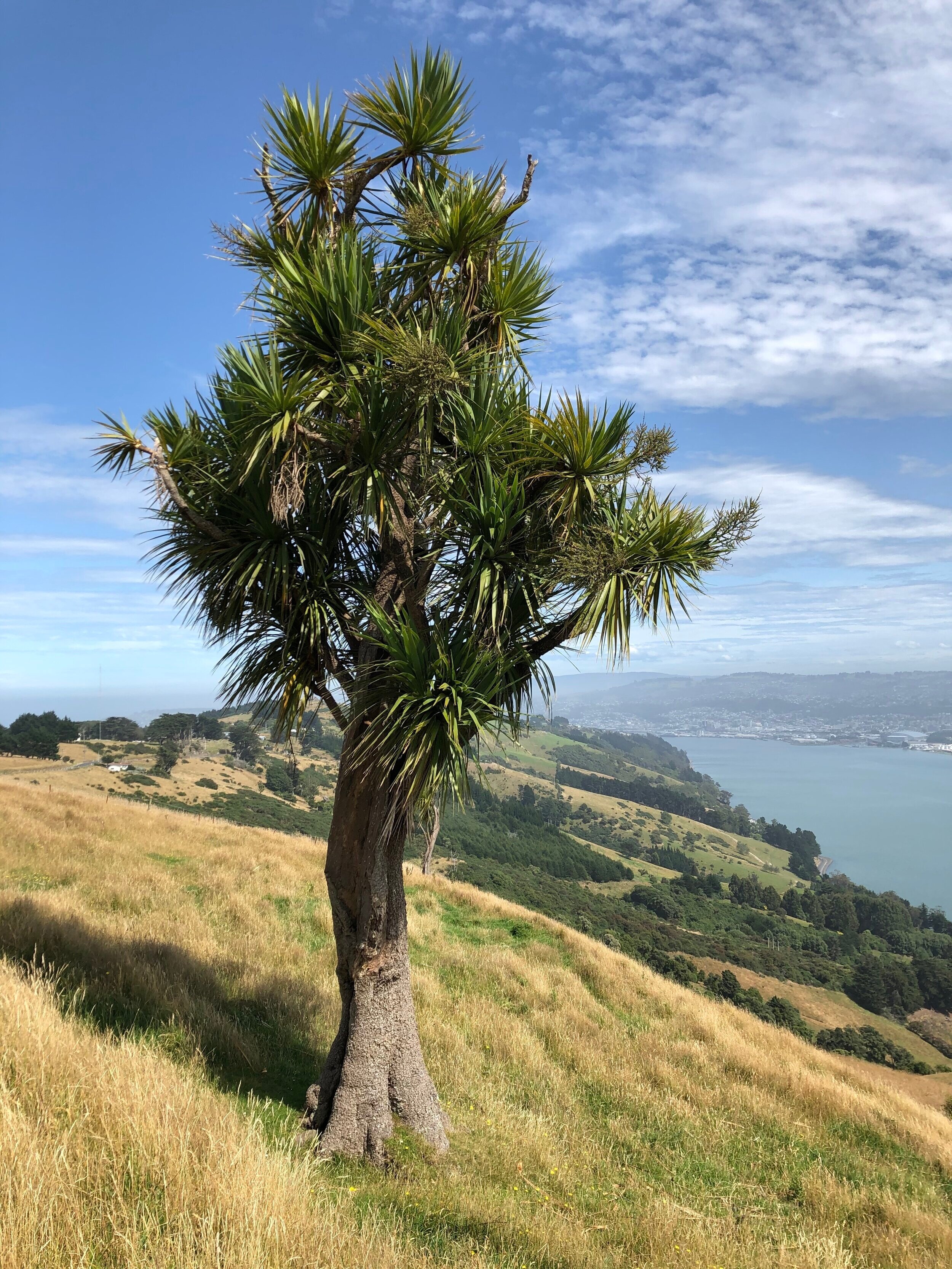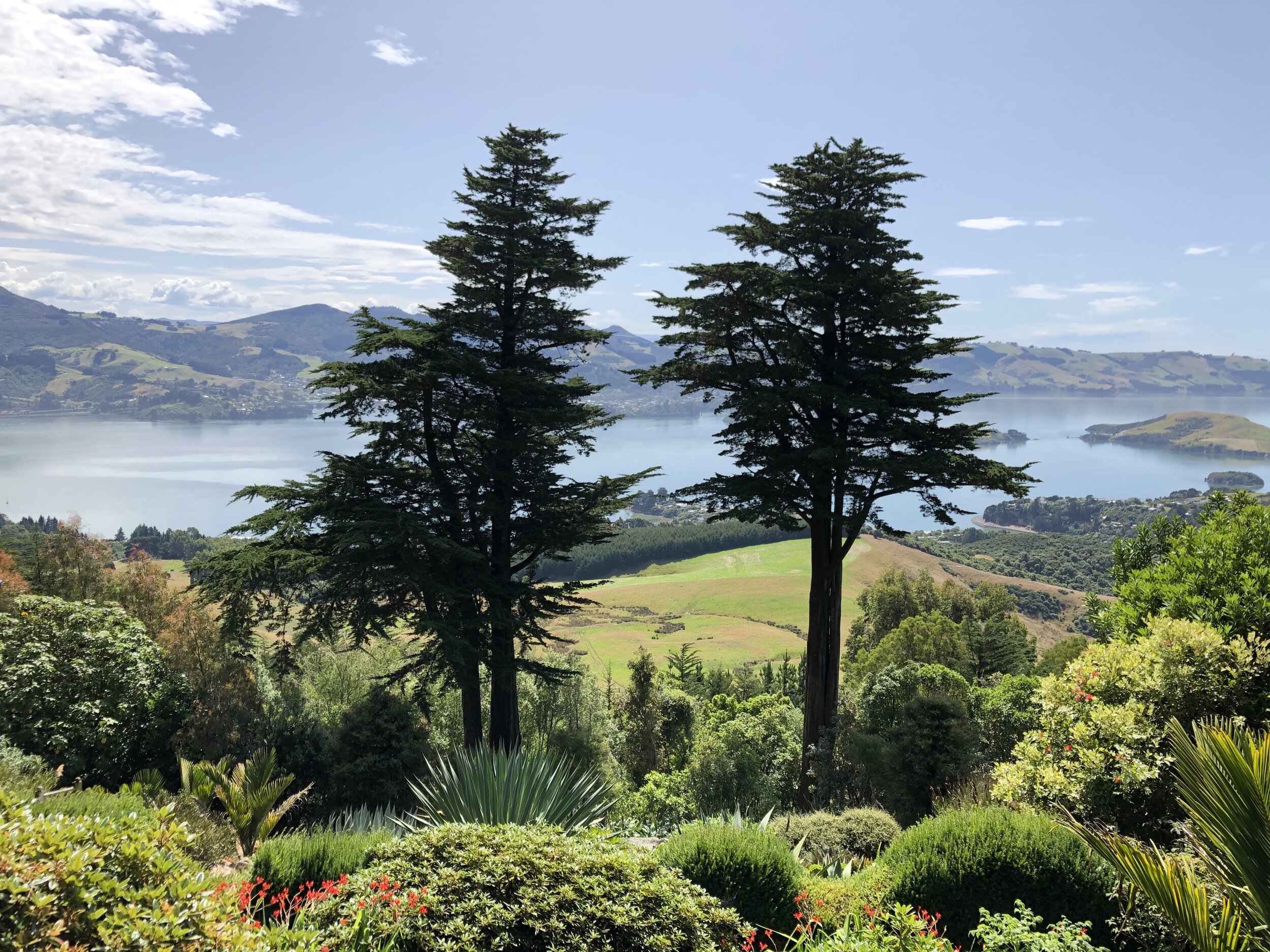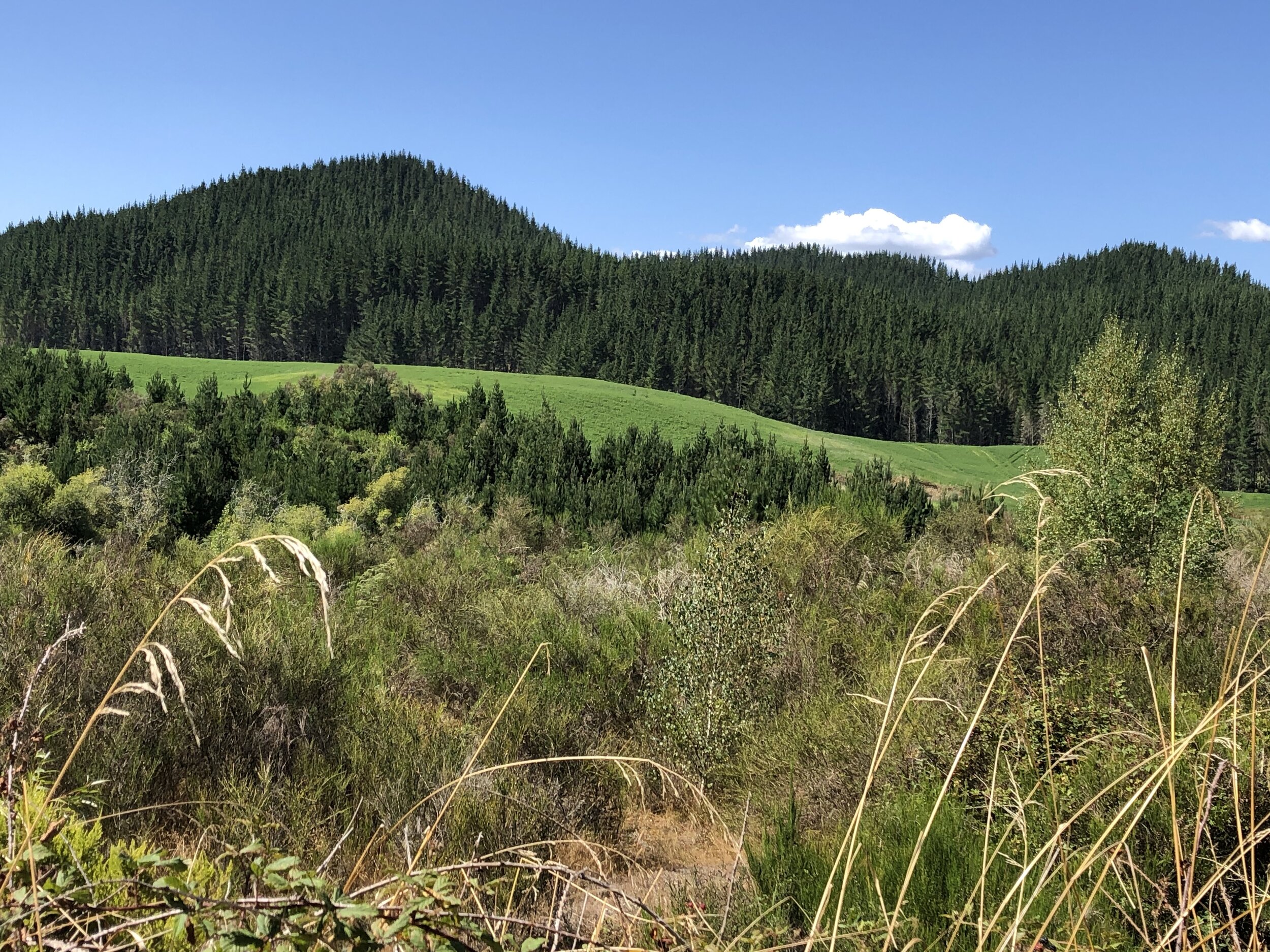New Zealand | February 2020
OSGF

Except for unstable substrates on the coast or in river valleys, and alpine areas above the tree line, the New Zealand landscape was blanketed in forest before the arrival of people: first the Maori about 800 years ago, and then Europeans beginning in the late eighteenth century. Through the nineteenth century with increasing European immigration much of the New Zealand landscape was cleared and transformed into pasture for sheep and cattle. However, two indigenous plants New Zealand Flax (second image) and Cabbage Trees (third image) remain conspicuous in open landscapes on both the North and South Islands. Two trees introduced from North America are also very common, Monterey Cypress (fourth image) and Monterey Pine (fifth image).

New Zealand Flax and Cabbage Trees (next photo) were both widely used by the Maori. New Zealand Flax, a very different plant from European flax, is endemic to Norfolk Island and New Zealand. It is the source of an important fiber in Maori culture and was also used commercially through the mid-twentieth century.

Cordyline australis is one of five species of Cabbage Tree native to New Zealand that were used for food and fiber by the Maori, and also in medicine. Cabbage Trees are widely planted as a palm-like ornamental in the warm temperate regions of the world, especially those with oceanic climates.

Monterey Cypress (Cupressus macrocarpa) and Monterey Pine (Pinus radiata, next image) are both species that have very restricted distributions on the West Coast of North America, but grow extremely well in the moist, equable climate of New Zealand.
Monterey Cypress occurs in the wild in only two small populations near Carmel, California, but has flourished in New Zealand where it grows to a much larger size than in its native area. It was widely planted in New Zealand as a wind break and also for fence posts. Monterey Cypress is sometimes included in the genus Hesperocyparis as Hesperocyparis macrocarpa.

Monterey Pine, native to just a few areas in the Central Coast of California and two islands off Baja, is considered endangered in the wild. However, it is a fast-growing, has wood with desirable properties for pulp and timber, and is the most widely planted pine in the world. Monterey Pine is used extensively in New Zealand and is the foundation of New Zealand’s important forestry industry. Extensive plantations have been established on both the North and South islands.